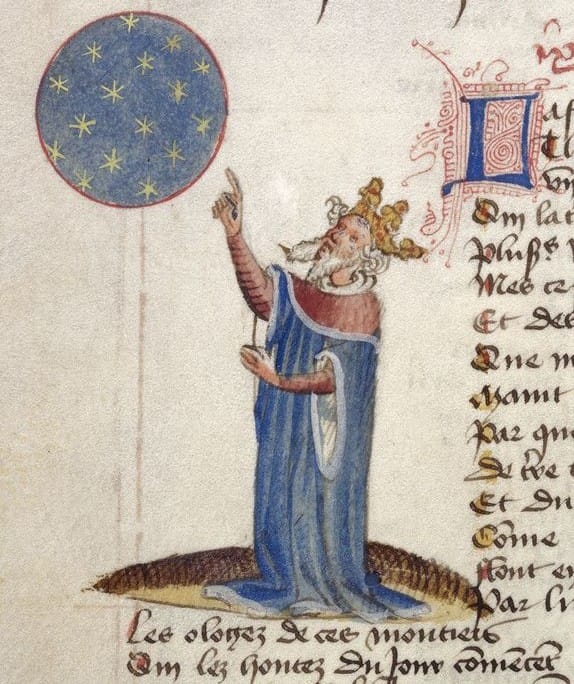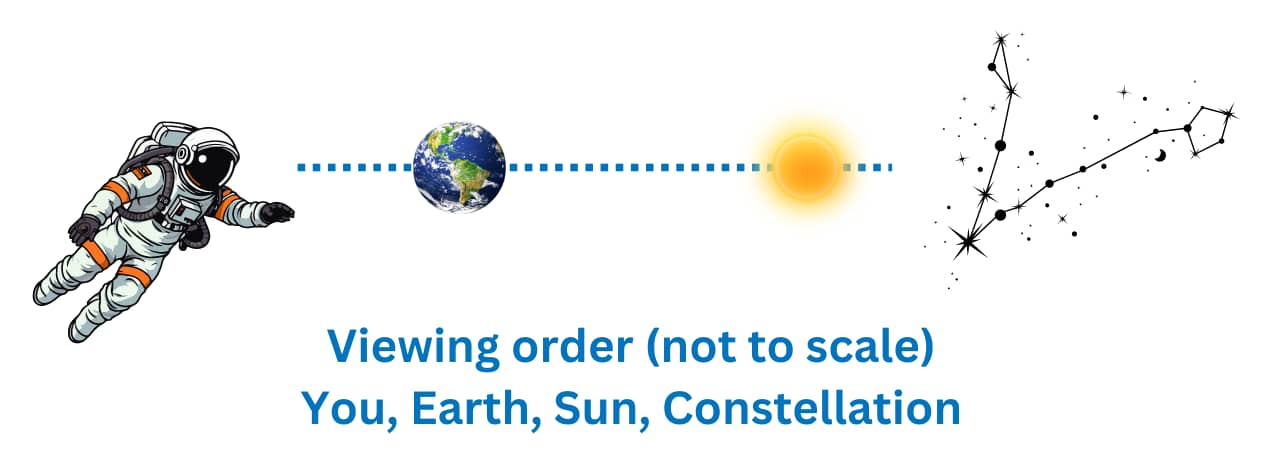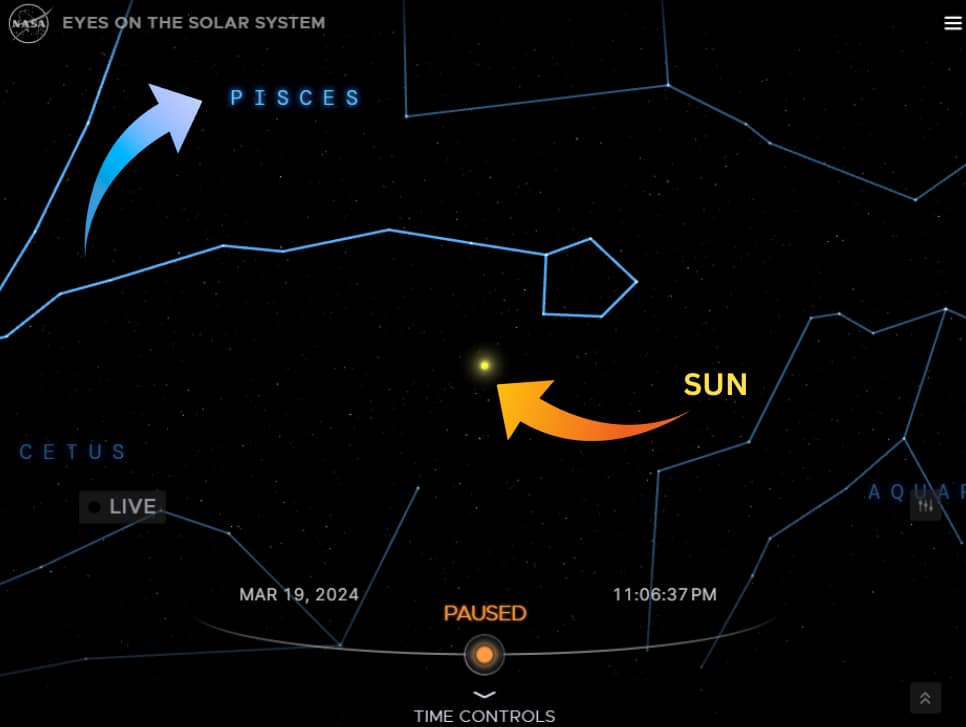Why Your Zodiac Sign Might Actually Be Different
I was chatting with a friend when she said, “I’ve been told by an astrologer that I’m in between two signs, so I get to choose. I’ve selected the one, but is it the right one? I don’t like being in limbo.”
Hmmm, that had me intrigued. Rather than try to decipher what stumped the other astrologer, I shared how we could approach casting her chart in a way that more closely reflects the activity in the heavens. What follows is a summary of our conversation and what happened next.
Starter notes
There are many paths that connect us to the stars and their storehouse of wisdom. The most popular version of Western Astrology is called Tropical. This is often the system used when you go online and get a free chart or daily astro guidance. But it has a glitch resulting from a historical holdover. The Tropical system is based on records that were written almost 2000 years ago.
There’s another option that produces a constantly evolving result called Sidereal. Initially, I ignored it as do most Western astrologers, but when I learned the following I changed my tune.
How we got here
Around 2000 years ago, in Alexandria, Egypt, astrology was handed down through the mystery school tradition. The major celestial event was the Vernal Equinox, VE, marking the beginning of the new year. This annual event occurs between March 19-21 each year when the sun is directly overhead the equator. In 2024 it happened on March 19.
In CE 100, Ptolemy, an important researcher, had access to 800+ years of records.1 His goal was to establish astrology as a legitimate science.2 In Tetrabiblos, he wrote that on the VE the Sun was in Aries. So naturally this constellation was assigned to the beginning of the year. We see this when we look up our sign according to our birthday. This list starts with Aries and is paired with the dates March 21 – April 19.
Over time, his work was lost and astrology faded. But around the Middle Ages, copies of Tetrabilios made their way from the East to the West and astrology experienced a rebirth. Tetrabilos became the main authority in the universities and astrology readings were in high demand by royalty and persons of high rank. It’s still in print today, you can get it on Amazon.

Oops
But there’s a catch, information taken from the Tetrabilios is outdated. That’s because the sky isn’t static. Ptolemy knew this, but he didn’t account for the fact that his material would be in use almost 2000 years later.
The key to understanding the movement of the heavens goes beyond the Sun, Moon, and parade of constellations at night. A slower one is the movement of the North Star which changes over time. Currently, the star closest to the celestial north pole is Polaris. But it wasn’t always Polaris and it won’t stay as our current marker. The entire zodiac slowly shifts. To make a complete rotation takes approximately 26,000 years, known as the Precession. We’ll raise its significance shortly.
A Different Sun Sign?
Since the Sun is so bright no one gets to observe the actual Zodiac Constellation that is behind the Sun at birth. Even for our midnight babies, who are born when the stars are visible, the Sun and the rest of the Zodiac are blocked by the Earth. Even if we could see everything, it would take a lifetime of dedicated night watches. You would need to live over 72 years, after which you would announce, “Yup it moved a little bit.”
Those tiny bits add up to 1° over 72 years. It still doesn’t sound like a big deal. But it’s been longer than 72 years since Ptolmey’s period. Put together these micromovements add up to 25°. As a result in 5 out of 6 people, their Zodiac sign is different than what is listed on the typical zodiac table. But it doesn’t mean your Tropical Sun Sign is erased from the heavens. Instead, there may be a new relationship to consider.
Want a 3-D Perspective?
Your sign can be calculated from historical tables, but we can also see it by going into space! Through a simulator courtesy of NASA’s Eyes On The Solar System we can view the positions of the planets against the constellations. Currently, it holds data going back to Dec 30, 1949. It takes a bit of imagination but the simulator gives us a view as if we were floating in space. This allows you to see the stars that are normally absent from our perspective from the earth.

The image below is a screenshot of this arrangement taken on the VE in 2024. On March 19 we see the image of the Sun and here’s the crux, behind it, we see the constellation of Pisces which is one constellation over from Aries. If we could put Ptolemy in a spaceship and show him, he wouldn’t be surprised since he had described the slow shifting of the zodiac due to the Precession.

The Split Widens
For someone who had their birthday close to the VE in 100 CE, the Tropical and Sidereal would arrive at closer results. If we shift to our current time they would differ. The Tropical stays with the historical placement while the Sidereal looks to the sky.

So where has the Sidereal system been all this time? Was it lost to history? Not really, strains of it are found in the Vedic system in India. It was reintroduced to Western astrologers during the 1800s. What changed was the discovery of cuniform tablets dating from 651 BCE which has led to its revival.
In short, due to my scientific training, I have more confidence in the Sidereal system.
My friend agreed that it made sense, so we uploaded her birth data into a Sidereal calculator and she saw the position of her Sun in her chart that left her without a doubt. She was a Leo, well within its boundaries! As a bonus, this constellation confirmed her hunch and she was beaming. But this joy was short-lived. Now she faced an identity crisis. My response was, “No problem, I’ve got you. Let’s set up a time to introduce you to your sun sign.”


Author
I enjoy sharing my love for personal growth. I consider myself a perpetual student since I learn more about our marvelous journey with each client I meet.
References
1Sachs, A., Hunger, H. (1988). Astronomical Diaries and Related Texts from Babylonia) Introduction to Astronomical Diaries and Related Texts from Babylonia.
2Jones, A. “Ptolemy Egyptian astronomer, mathematician, and geographer.” Encyclopedia of Brittanica, 2023
